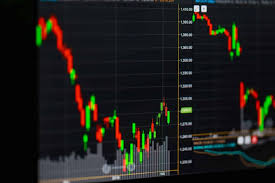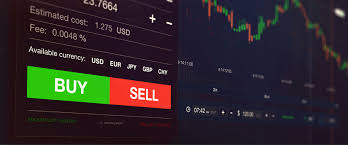
Forex Trading for Beginners: A Comprehensive Guide
Welcome to the world of Forex trading! If you’re new to the concept, you may find the vast amount of information available overwhelming. This guide is designed to provide a comprehensive overview for beginners, covering the fundamentals of Forex trading, essential strategies, and tips to enhance your trading skills and confidence. You will also find a useful resource for trading applications: forex trading beginner guide Trading App APK.
What is Forex Trading?
Forex trading, also known as foreign exchange trading or currency trading, involves the buying and selling of currencies on the foreign exchange market. The Forex market is the largest and most liquid financial market in the world, with a daily trading volume exceeding $6 trillion. Unlike stock markets, Forex trading occurs around the clock, from Monday through Friday, allowing traders to buy and sell currencies at any time.
Understanding Currency Pairs
In Forex trading, currencies are traded in pairs (e.g., EUR/USD, GBP/JPY). The first currency listed is known as the base currency, while the second currency is referred to as the quote currency. The value of a currency pair reflects how much of the quote currency is needed to purchase one unit of the base currency.
For example, if the EUR/USD pair is trading at 1.10, it means that 1 Euro can be exchanged for 1.10 US Dollars. Traders can buy or sell currency pairs based on their analysis and market predictions.
Getting Started with Forex Trading
- Choose a Reliable Forex Broker: Selecting a trustworthy broker is crucial for success in Forex trading. Look for a broker that is regulated and offers a user-friendly trading platform, low fees, and a demo account for practice.
- Create a Trading Account: After selecting a broker, you will need to open a trading account. This involves filling out an application and may require you to provide identification and proof of address.
- Practice with a Demo Account: Before risking real money, practice using a demo account. This account allows you to trade with virtual funds, helping you familiarize yourself with the trading platform and develop your strategies.
Key Concepts in Forex Trading
Leverage

Leverage allows traders to control a larger position in the market with a relatively small amount of money. For example, if a broker offers a leverage of 100:1, a $1,000 deposit can control a position of $100,000. While leverage can amplify profits, it also increases the risk of losses, so it’s essential to use it wisely.
Margin
Margin refers to the amount of money required as collateral to open and maintain a leveraged position. Understanding margin is crucial because it directly impacts your risk management strategy and the amount you can trade.
Pips
In Forex trading, price movements are measured in pips, which is short for “percentage in point.” A pip is typically the smallest price change in a currency pair, and it is usually equivalent to a movement of 0.0001 for most pairs (e.g., from 1.1000 to 1.1001).
Basic Trading Strategies
1. Scalping
Scalping is a short-term trading strategy that involves making numerous trades throughout the day to capture small price movements. Scalpers typically hold positions for seconds or minutes, aiming to accumulate small profits consistently.
2. Day Trading
Day trading involves buying and selling currency pairs within the same trading day. Day traders typically analyze market trends and use technical analysis to make informed decisions, closing all positions before the market closes to avoid overnight risks.
3. Swing Trading

Swing trading is a medium-term strategy that aims to capture price movements over several days or weeks. Swing traders often use technical analysis to identify potential reversal points, entering positions when they believe the market will change direction.
4. Position Trading
Position trading is a long-term strategy where traders hold positions for extended periods, from weeks to months or even years. This approach is often based on fundamental analysis and economic indicators.
Risk Management
Effective risk management is vital in Forex trading. Here are some essential risk management strategies:
- Set Stop-Loss Orders: A stop-loss order automatically closes a position when the price reaches a specified level, limiting potential losses.
- Limit Your Leverage: While leverage can enhance profits, it can also lead to significant losses. Use moderate leverage to protect your capital.
- Diversify Your Portfolio: Avoid putting all your funds into a single trade. Diversifying your investments can mitigate risks and provide opportunities for profit across different currency pairs.
Emotional and Psychological Aspects of Trading
Forex trading is not just about strategies and analysis; it also involves managing your emotions. Successful traders develop discipline, patience, and a strong mindset. Here are some tips to enhance your psychological approach to trading:
- Stick to Your Plan: Create a trading plan that outlines your strategies and stick to it. Avoid making impulsive decisions based on emotions.
- Accept Losses: Losses are part of trading. Accepting them and learning from your mistakes can improve your future performance.
- Keep a Trading Journal: Documenting your trades can help you identify patterns in your decision-making and improve your strategies over time.
Conclusion
Starting your journey in Forex trading may seem daunting, but with proper education, practice, and risk management, you can develop the skills needed for success. Remember to stay informed about market trends, keep improving your strategies, and maintain a disciplined approach. As you advance, explore additional resources and trading tools that can help you on your path.